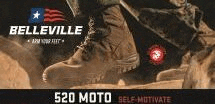FOR IMMEDIATE RELEASE
May 11, 2017
Durham, North Carolina – TAG is championing its mission of supporting military families through its partnership with the non-profit Hope For The Warriors during the month of May.
In honor of our country’s servicemen, servicewomen, and veterans, TAG has partnered with Hope For The Warriors for Military Appreciation Month. Hope For The Warriors is a non-profit that “believes those touched by military service can succeed at home by restoring their sense of self, family, and hope.” It advances connections to community resources and provides comprehensive support programs for service members, veterans, and military families.
Hope For The Warriors’ purpose goes hand-in-hand with TAG’s mission to support military families and veterans. In honor of their shared values, TAG will be donating 10 percent of its profits during the month of May to Hope For The Warriors.
“Partnering with Hope For The Warriors in their mission to make a difference for warfighters when they return home is a natural extension of our mission,” said Jeffrey Hawting, President. “We are proud to serve the military community with products designed to make them safer and more comfortable when they are defending our country.”
TAG offers a lifetime warranty on all of its manufactured nylon products against any defects in materials or workmanship. TAG products keep warfighters safe in the line of duty, and when a soldier returns home TAG keeps that protection going with its product lifetime warranty.
TAG nylon products are all made in the USA. TAG empowers consumers to tailor their gear to any mission, as all are designed with the serious operator in mind. TAG’s lifetime warranty, products, and mission truly embody its belief in liberty and gear for all, and TAG is proud to serve as a Hope For The Warriors partner.
About Tactical Assault Gear
Since 2001, TAG® has designed, built and supplied best-in-class products for the outdoor, shooting, hunting and tactical market place. Using an excellence from experience approach, TAG hand selects every item with in-house industry experts. Whether it’s your passion or your profession, TAG® has all of the gear, equipment, clothing and tools you’ll need to perform with confidence.
www.tacticalassaultgearstore.com



















































































































